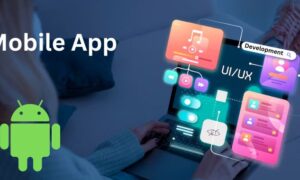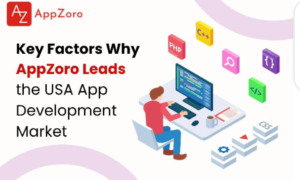NoThe world is rapidly transitioning to digital technology. Everything is changing, including the healthcare sector, retail stores, the taxi industry, and banking. In terms of technology, the industry has advanced significantly since 10 years ago. However, the healthcare sector still has a ways to go, especially in light of the pandemic’s severe impact on the global economy.
The healthcare sector is expanding as people’s awareness of their health increases. To efficiently service billions of people, it is still insufficient. You probably witnessed this during the COVID-19 destruction. Things get more challenging when human resources are the only source of support. There is a considerable shift to digital platforms in health systems across the globe. The healthcare sector has a huge need to adopt new technologies as a result of the transition from traditional to digitalization. The healthcare sector has a huge need to adopt new technologies as a result of the transition from traditional to digitalization.
Healthcare technology has evolved tremendously in recent years, and experts anticipate further advancements in the years to come. Healthcare mobile applications are becoming more crucial to enhance patient outcomes and provide better healthcare services as a result of the advanced use of artificial intelligence (AI) and the Internet of Things (IoT). Everyone will benefit from the impending healthcare app innovations trends in 2023, from doctors to patients. Companies that create mobile apps are receiving numerous requests from customers throughout the world to create cutting-edge software solutions.
The top mobile app development trends that capture the public’s attention in 2023 will be intriguing to observe.
LEADING HEALTHCARE APP DEVELOPMENT TRENDS FOR 2023:
We’ll now examine the top healthcare app development trends that will rule the sector in 2023.
1) BLOCKCHAIN TECHNOLOGY
With the help of blockchain technology, anything is accessible online. Blockchain technology is assisting the healthcare sector in keeping information secure in an effective way as protecting patient data is one of its top objectives.
Just two of the many advantages that blockchain technology can offer the healthcare sector are increased data security and accuracy. Additionally, it can give patients more privacy and control over their data, allowing them to own their medical information and ensuring their security and accessibility. Additionally, it might be utilized to combine administrative processes like claim processing and medical record verification.
The sophisticated algorithm of blockchain technology, which is not just related to Bitcoin, is assisting other businesses in protecting their data. Blockchain technology may be applied in the future to handle electronic medical records, track medications, diagnose and treat patients using AI, conduct virtual consultations, and other things. The healthcare sector will undergo a complete transformation as a result, with better care that is also more effective and efficient.
2) (IoMT) INTERNET OF MEDICAL THINGS
The digital transformation of the healthcare industry must include the Internet of Medical Things (IoMT). The network of hardware and software applications, as well as medical devices connected to the Internet, is known as the Internet of Medical Things (IoMT). IoMT, also known as the Internet of Medical Things or IoT in the healthcare industry, enables wireless and remote equipment to safely connect over the Internet to enable a quick and flexible analysis of medical data.
Some advantages of employing this technology include better patient care, enhanced effectiveness, and improved communication between doctors, nurses, and patients. The larger Internet of Things (IoT) is the network of all Internet-linked items, such as biometric cybersecurity scanners, connected factory equipment, and autonomous farming equipment. IoMT is primarily focused on applications in the healthcare and medical fields.
These technologies will be much more crucial for the medical industry and the general public as IoMT device capabilities develop (and global conditions force more individuals to stay at home).
IoMT has many advantages for both patients and medical professionals:
- Many IoMT devices are built to track a patient’s vital signs in detail and depth, to a degree that wouldn’t be conceivable during a quick office visit. Personalized, precise diagnoses and therapies.
- Remote medical assistance and counsel — IoMT devices’ inherent capabilities allow them to safely collect data from any location, even a patient’s home, and send it to the doctor without the need for an in-person visit.
- Patient empowerment is made possible by IoMT devices like wearables and smart scales, which provide users access to information they would otherwise need to obtain from a doctor.
3) ARTIFICIAL INTELLIGENCE & MACHINE LEARNING
AI and machine learning are becoming more important technologies in the healthcare sector for enhancing patient care and streamlining the healthcare system. The application of AI has advanced thanks to apps like Face App, Prisma, and others that are based on AI.
In the upcoming years, it is projected that the growing need for AI technology across several industries, including automotive, banking & finance, logistics, manufacturing, healthcare, food and beverage, and retail, will considerably propel the expansion of the global AI market. Robotic process automation (RPA), a type of AI technology, can assist with early diagnosis, patient data analytics, improved data accuracy, simplifying health payments, and other activities associated with healthcare.
New trends are emerging that will influence the future of healthcare application development as AI and machine learning become more prevalent in the healthcare sector. AI and machine learning can help clinicians diagnose patients quickly and correctly and choose the best course of action for each patient.
Better AI-based assistants, algorithm prediction, and other Smart technologies integrated into mobile apps are all made possible by machine learning (ML) technology. AI and machine learning will continue to be popular in industries.
Additionally, virtual bots that can communicate with patients and respond to their questions are being developed using AI and machine learning. As a last point, many healthcare organizations are investigating the use of voice-based interfaces that allow people to consult their doctors.
4) INSTANT APPS AND PROGRESSIVE WEB APPS (PWAs)
Like other technologies, the web sector is constantly evolving to provide better solutions. PWAs, a remarkably promising technology, seemed to revolutionize how we all interact with web pages.
PWAs combine the finest features of native apps and websites to provide an improved mobile user experience. They are distinct web applications that may be viewed just like regular websites, but they offer benefits that were previously only available to native programs, such as push notifications, offline usability, hardware device access, camera and microphone access, GPS, etc.
PWAs cut the volume of data requests to a tiny portion of what it is now. PWAs, or progressive web apps, allow for very instantaneous loading times, much like native apps.
Benefits of progressive web apps include,
-Higher conversion rates
-Increased user engagement and better user experience
-Affordable to design and maintain compared to native apps, more organic search traffic
-Increased performance and customer involvement lead to higher sales.
5) ENHANCED SECURITY
A robust cyber mesh shields healthcare application from all dangers for a considerable amount of time—certainly not forever.
To safeguard your system from malware attacks, you can hire app developers who have a solid understanding of cyber security for your healthcare app development needs. You may strengthen your authentication process by using the enhanced cyber mesh, allowing only authorized devices to connect and access confidential medical information—and only within the network.
6) HEALTHCARE WITH VIRTUAL REALITY
One such new technology in the medical field is virtual reality (VR). The way doctors diagnose and treat patients could be drastically altered by virtual reality. It can transfer you within and outside of the human body, allowing you to view and access places that are often inaccessible.
Clinical professionals can show patients critical information in greater detail and help them visualize their diseases and understand how therapies and treatments will work by displaying virtual models that are rendered with the use of hyper-realistic computer-generated imagery (CGI). By utilizing 360-degree video and virtual worlds built on the Unity platform, mental health may be distributed in settings and ways that far exceed conventional methods.
By successfully deflecting a patient’s attention, virtual reality pain treatment apps assist in reducing the intensity of pain or intense discomfort. The usage of potentially harmful medications is minimized by this kind of VR, which also lowers healthcare expenditures.
7) HEALTHCARE WITH AUGMENTED REALITY
The practice of overlaying computer-generated content on a real-time picture of the world is known as augmented reality (AR). For medical education, imaging, dentistry, and nurse training, augmented reality (AR) blends digital information with the user’s environment in real-time. The AR healthcare solutions include AccuVein, VIPAR, ARnatomy, and VA-ST.
AR is already being used by some healthcare applications to improve their service offerings. Among them are:
a) Patient perspectives
Patients frequently lack knowledge regarding treatments or the side effects of the medications they are given. Virtualized information on a patient’s illness and medications might boost confidence and awareness while promoting optimal doses.
b) Medical Training school
The application of artificial reality technology by the life science industry can help to inform and involve healthcare professionals in therapies and procedures that will enhance patient outcomes. Companies can offer captivating narratives with examples of the physical effects of an illness at various stages and the results of therapies.
c) Global diseases
Outbreaks put a drain on resources, and going untreated can be lethal. The reach and cooperation of providers can be increased with the use of artificial reality. Specialists can instantly prescribe medicine, view vital signs, and perform remote physical examinations of patients.
d) Upkeep and problem-solving for equipment
Equipment failure in a hospital can be lethal. By superimposing step-by-step instructions via mobile or helmet-mounted display devices, artificial reality can aid field engineers in troubleshooting. Additionally, this technology can help with preventive maintenance and device calibration.
CONCLUSION:
Many of the trends for mobile app development services stated above are not just for 2023. It will continue for at least the next ten years. These are a few of the trends in healthcare app development that will be prevalent in 2023. Finding the best developer for healthcare applications that can successfully incorporate these trends into your mobile app idea will be the next step. In general, incorporating the newest developments in healthcare app development for 2023 would be a wise move for attaining a market advantage.



































